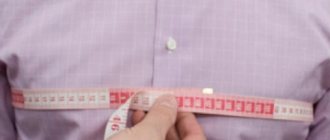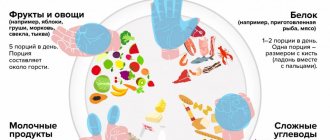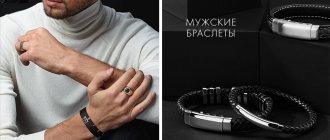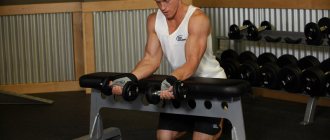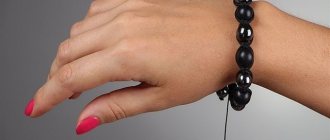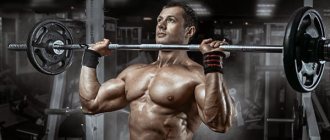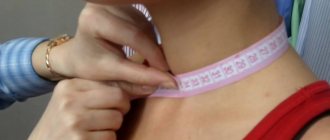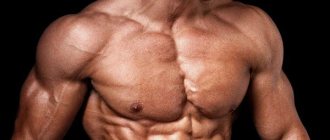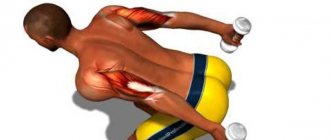How to take measurements: general rules
- To create a pattern for a dress, skirt or trousers, measurements must be taken using the underwear. When trying on, wear the underwear with which you intend to wear the product. This is important because different bra shapes, for example, can change the height and girth of your bust.
- All measurements are taken on the most developed part of the body. For right-handers, measurements are taken on the right side, for left-handers - on the left.
- When taking measurements, you need to stand straight, without tension, in a position familiar to your body. It is quite difficult to take quality measurements of yourself. When the position of the body changes, its size also changes. A possible way out of the situation: take a product that fits you very well and take measurements from it.
- Mark the natural level of your waist with an elastic band or thin cord - this will simplify the task.
- Since the human body is symmetrical, the pattern is usually only drawn to the middle of the figure. For ease of use, some measurements are recorded in half size. These measurements include the semi-circumference of the neck, chest, waist and hips, back width, width and center of the chest. The remaining dimensions are recorded and used in full.
- Different countries have slightly different pattern making systems and measuring methods. And depending on the school, the names of the measurements may vary within one country. If you are not sure what size we are talking about, read the description. This way you can quickly find a match.
Problems arising when determining weight standards
It is generally accepted that a person’s ideal weight is what he had at 18 years old. If you can easily maintain it even at fifty years old, then you can safely count yourself among the lucky ones. Because every 10 years we live, our body’s energy consumption decreases by approximately 10%, i.e. at a rate of 1% every year.
Therefore, every ten years we become heavier by about 10% of our previous weight. If you let things take their course, at 29 you will weigh 10% more than at 18, at 40 - 10% more than at 29, and at 50 - 10% more than at 40.
For a very long time, a table of the ratios of a person’s height, age and weight was used to determine the norm of weight. But since all its indicators were averaged, they did not take into account the body structure and muscle mass of a person, the results obtained were very often inaccurate.
Over time, this table was refined and polished. The average indicators in the table were replaced by indicators for the three types of human physique, determined by the Solovyov index, and the division in years disappeared. However, this does not mean that the table has become ideal.
The problem of determining the normal weight for obese people still remains unresolved. After all, scientists have long proven that obesity and excess weight are far from the same thing. When using a table to determine weight, you must definitely keep in mind that a well-developed male athlete with impressive muscle mass according to this table can easily be classified as overweight, although this excess is not given to him by fat deposits, but by a large volume of muscles.
If, after several weeks of regular exercise in the gym, the scale shows that you have gained weight, then you have added it not due to excess fat, but due to additional muscle mass. So this is a reason to be proud, not sad.
Basic figure measurements
Shoulder measurements
These measurements will be needed if you want to sew a dress, blouse, jacket, or coat.
Measurements 1–10 are recorded and used in half size, the rest - in full.
- Half neck circumference - measured at the base of the neck. The tape needs to be closed in the jugular cavity.
- Half-circumference of the chest is the first - the tape passes horizontally from the back along the protruding points of the shoulder blades, from the front - above the chest.
- The half-circumference of the chest is the second - the measuring tape goes from the back as in the previous version, from the front it passes along the most protruding points of the chest. It is better to remove the first and second half-circumferences of the chest one after another, without changing the position of the tape on the back. Maintain a natural posture, lower your arms down, but do not pinch the tape in your armpits.
- The half-circumference of the chest is the third - the tape runs around the body strictly horizontally, in front - along the most protruding points of the chest, in the back - maintaining a horizontal line. This measurement is the mass production size that suits you.
- Half waist circumference - measured using an auxiliary tape or elastic band located in the narrowest part of the figure. Do not try to create a waist yourself by tightening the cord. You are beautiful, regardless of size, and the correct number will help the product fit well.
- Semi-circumference of the hips - the tape goes horizontally around the figure, at the back - along the most protruding points of the buttocks, at the front - taking into account the protrusion of the abdomen.
- Chest width first - measured horizontally between the front corners of the armpits, above the chest.
- Second chest width - the measuring tape is applied horizontally between the front corners of the armpits through the most protruding points of the mammary glands.
- Center of the chest - measured between the most protruding points of the chest. This size, like the half-bust circumference, varies depending on the shape and tightness of the bra you are wearing.
- Back width - measured across the shoulder blades between the back corners of the armpits.
- Front waist length - measured from the highest point of the estimated shoulder seam at the base of the neck to the front waistline. The tape is placed vertically along the figure. To find the highest point of the shoulder seam, wear a thin jersey tank top. Where the shoulder seam meets the neckline is the right point. You can find it before starting measurements, mark it with chalk, and remove the T-shirt.
- Bust height is the distance from the highest point of the shoulder seam to the most protruding point of the chest.
- Back waist length is the first - measured from the seventh cervical vertebra to the waist line. If you feel the base of the neck at the back, you will find a protruding vertebra. That's what you need.
- The second back waist length is measured from the highest point of the estimated shoulder seam at the base of the neck to the back waist line. The tape is positioned vertically, following the curves of the figure.
- Back armhole height is the distance from the highest point of the shoulder seam to an imaginary horizontal line drawn from the back corner of the armpit.
- Oblique shoulder height - measured from the end point of the shoulder to the point where the spine intersects with the waist line. The end point of the shoulder can be found using a thin knitted tank top with a sleeve. The place where the shoulder seam enters the sleeve seam is the point we need. Since you marked the waist with an elastic band or tape, finding the intersection of the waist line and the spine should be easy.
- Shoulder width is the distance from the highest point of the shoulder seam at the base of the neck to the end shoulder point.
- Sleeve length - measured from the end point of the shoulder to the desired length. The arm should be in a natural position, slightly bent at the elbow.
- Shoulder circumference - the tape runs strictly horizontally at the widest point of the shoulder.
- Wrist circumference - measured above the hand along the protruding bones.
- Product length - measured from the seventh cervical vertebra to the desired length.
Skirt measurements
The number of measurements needed for a skirt depends on its silhouette. For a circle skirt, you only need the length of the product and the half-waist circumference. To sew a pencil skirt, you also need to measure the half-circumference of your hips. The length of the skirt is measured from the waist line along the side seam to the desired level.
Measurements for trousers
In addition to the half-girth of the waist and hips, you will need a few more measurements to build the trousers.
- Seat height - measured on a sitting figure from the waist line along the side seam to the chair. For accurate measurements, the seating surface must be hard.
- Knee height - measured standing from the waist line along the side seam to the middle of the kneecap.
- Knee width is especially important for skinny trousers. The tape is placed around the bent knee.
- The width of the trousers at the bottom is selected according to the model. If you are going to sew tight trousers, then the width of the trousers at the bottom will be equal to the circumference of the foot through the heel.
- Pants length - measured standing from the waist line along the side seam to the desired length. In narrow trousers, the length is taken to the bone. In medium or wide ones - up to the middle of the heel with which you will wear these trousers.
When creating a pattern, you need to remember that the measurements taken from the figure are not equal to the dimensions of the parts. When constructing drawings, an allowance for freedom of fit is added to the measurements. This is not a constant value. It depends on the size of the figure, the properties of the fabric, the purpose and silhouette of the product, as well as fashion.
Wrist and forearm blood pressure monitors
Our readers successfully use ReCardio to treat hypertension. Seeing how popular this product is, we decided to bring it to your attention. Read more here...
When choosing a tonometer, a person draws up a certain number of criteria that the device for measuring pressure must meet. A potential buyer has a choice between devices with a wrist or shoulder mount. Each model has its pros and cons. Among the main characteristics are measurement accuracy, compactness, appearance, and ease of use outside the home.
Tonometer on the forearm
Tonometers with a sleeve attached to the shoulder are recommended for older people, since such automatically controlled tonometers are much more comfortable to use.
This feature is due to the fact that, unlike the carpal vessels, the brachial vessels are larger, so blood circulation and heart rate are felt better on the shoulder. In people with chronic diseases of the blood vessels, measurements are more difficult, as the vessels become denser, which affects the quality of the signal and the reliability of the data obtained. Heart disease may also affect the reliability of your results.
Such features of the body require modern instruments, where the device takes measurements several times in a row, after which it shows the user the average value. Such devices also have additional functions:
- indicate disturbances in heart rhythm and interruptions in heart contractions;
- have a reminder function for scheduled measurements;
- save the results of previous measurements, including date and time.
Wrist blood pressure monitor
A wrist tonometer is a small and fully automatic device that is mounted on the wrist. Blood pressure is measured at the radial artery at the junction of the forearm and hand bones. The mechanism of operation is similar to the action of a shoulder tonometer. This type of device is convenient to use at home, as it does not require special skills. The compactness and lightness of the device allow you to comfortably use the wrist tonometer outside the home, at work or while traveling.
Wrist blood pressure monitors are not very popular, as there is an opinion that they do not give an accurate result.
Despite the obvious advantages, the device has a noticeable drawback. Most wrist-mounted devices produce insufficiently accurate results and have a large error. Often, a person can see a normal pressure reading when complications of arterial hypertension or high blood pressure have begun, when in reality the parameters are normal.
To improve the accuracy of the device’s readings, it is necessary to hold the hand on which the tonometer is attached in the area of the heart. It is worth considering that a difference in the position of the hand (even by a few centimeters) can introduce an error in the study results (up to 10 mm Hg). If you place the tonometer much higher than the position of the heart, the study indicators will be distorted in a higher direction; if lower, then in a lower direction
It is possible to measure blood pressure in a supine position, but even in this case it is important to ensure that the device on the arm is in the area of the heart
What to choose?
Since there is a large error in monitoring, experts do not recommend using this kind of devices for systematic monitoring or self-monitoring of pressure. To carry out regular measurements without visiting your doctor, it is better to opt for an automatic or semi-automatic device with a sleeve attached to the shoulder.
The process itself
When starting to take parameters, you should know exactly what measurements are required. In order to sew a men's shirt, you need to know how to measure shoulder width, sleeve length, neck circumference and product length. Tailor's measuring tools can help with this.
The measuring tape was invented by a French tailor back in the early nineteenth century. It is a narrow strip of durable material one and a half meters long with metal clips at the ends. A graduation scale is applied on both sides of the tape. To avoid inaccuracies in taking measurements, it is advisable to use the same tool when sewing a product.
Standard size tables and correspondence between size markings in different countries
In the “golden” Soviet times, everything was clear and understandable in stores: a dozen clothing models are available, no more than a couple of them deserve attention, and each one has a clearly stated size according to the native GOST. But times have changed. In any clothing store there are no longer hundreds, but thousands of models, and the variety makes your eyes wide open. But they scatter even more from the variety of size markings. It's good if you make the purchase yourself. What if you surprise a friend? And then this surprise hangs on her like on a hanger...
On this page we have collected all the information about sizes and markings. We would sincerely like to help you. And we are just as sincerely afraid that you may get completely confused
Please note: the average size madam with a height of 168 cm, corresponding to the native Russian-Ukrainian size 46, is estimated by the magazines “Burda” and “Diana-Moden” to be size 40, according to the size table of the magazine “Chic” - size 44. We hope that now you It’s clear why the author of the “Lubax” method, Lyubov Aksenova, makes titanic efforts to create a unified system of sizes (naturally, based on a standardized parameter - “norm”, the basis of the Lyubax method). We present to your attention three groups of tables:
We present to your attention three groups of tables:
Features of the human physique
Before taking any measurements, you should choose the style of the future item, taking into account the physique of the future owner. In this case, the clothes will be comfortable, beautiful, and will be able to hide figure flaws and highlight its advantages.
For women
Modern stylists consider the hourglass to be the most attractive female body type. Happy owners of a “perfect” figure have shoulder width equal to the width of the hips, and the waist line is clearly visible. To bring your own silhouette closer to the ideal with the help of clothes, you need to determine your body type.
The following options are possible:
Body type Description “A” or “pear” Women with this type are characterized by: · small, neat breasts; · wide, massive lower body. Models with: · lush decorations on the chest: ruffles, frills, flounces will help make the figure more proportional, visually broaden the shoulders and narrow the hips.
“T” or “carrot” Those with a T-figure are distinguished by: · long slender legs; · shoulders that are too wide for a woman; To hide these shortcomings, models are selected: · visually narrowing the shoulder (sleeve with a lowered armhole); · without lush accessories on the chest; · without wide sleeves.
“P” “rectangle” This figure is close to ideal, but the waist is not clearly defined. Therefore, when cutting, any details that emphasize it are used: belts, fitted clothing
There is no need to particularly highlight the shoulder line, but you can make it clearer with the help of shoulder pads. “Hourglass” In this case, it is important not to spoil what is already perfect with clothes. You should choose styles that do not enlarge either the chest or hips, but emphasize a thin waist
Clothing that is too loose or baggy is undesirable. The best option is a semi-fitting silhouette.
Ideal proportions for women
Classic bodybuilder proportions
In the thirties of the last century, American anthropologist David P. Willoughby carried out many measurements of athletes, trying to determine the ideal muscle sizes that seem as correct as possible to the human eye. His results: Biceps size - 1.2 forearm sizes Forearm from chest width - 0.300 Biceps from the circumference of each calf - 1 Neck from chest circumference - 0.383 Chest - 1.33 waist sizes Chest - 1.11 hip sizes Hips - 1.5 calves sizes
McCallum formula
The volume of the chest should include 6.5 times the volume of the wrist. The volume of the hips should be equal to 85% of the volume of the chest. The volume of the lower leg should be equal to 34% of the volume of the chest. The waist should be equal to 70% of the volume of the chest. Biceps – 36% of the volume of the chest. The volume of the hips should be equal to 53% of the volume of the chest. chest This formula for the proportionality of the male body was derived by the North American athlete and coach John McCallum. At its core, this is practically the same “golden ratio”, albeit in a somewhat more complicated form, more suitable for our time.
Ideal proportions according to D. Weider (Ben Weider)
Anthropometric indicators of bodybuilders of the Wider school
| Height, cm | Weight, kg | Circumference, cm | |||||
| Rib cage | Waist | Neck | Shoulder | Hip | Shin | ||
| 152.5 | 58.50 | 101.5 | 67.50 | 38.00 | 38.00 | 53.00 | 37.00 |
| 157.0 | 63.50 | 104.5 | 70.00 | 39.00 | 39.50 | 55.50 | 38.00 |
| 162.5 | 70.50 | 111.0 | 76.00 | 40.50 | 40.50 | 57.00 | 39.50 |
| 167.0 | 79.00 | 116.5 | 78.50 | 42.00 | 42.00 | 58.50 | 40.00 |
| 172.0 | 83.50 | 118.0 | 80.00 | 43.00 | 43.00 | 59.50 | 40.50 |
| 177.0 | 90.00 | 121.5 | 82.50 | 44.00 | 44.00 | 62.00 | 41.50 |
| 183.0 | 95.00 | 124.0 | 84.00 | 44.50 | 45.00 | 63.50 | 42.50 |
| 188.0 | 99.00 | 127.0 | 85.00 | 46.00 | 46.00 | 65.00 | 46.00 |
IDEAL indicators of bodybuilders according to Marcel Rouet
Anthropometric indicators of ideally built bodybuilders (according to Marcel Rouet)
| Height | Weight | Shoulder | Neck | Rib cage | Waist | Hip | Shin |
| 165 | 65,0 | 35 | 35 | 105 | 75 | 55 | 35 1 |
| 166 | 65,5 | 35,5 | 35,5 | 106 | 76 | 55,5 | 35,5 |
| 167 | 68,0 | 36 | 36 | 107 | 77 | 56 | 36 |
| 168 | 69,5 | 36,5 | 36,5 | 108 | 78 | 56,5 | 36,5 |
| 169 | 71,0 | 37 | 37 | 109 | 79 | 57 | 37 |
| 170 | 72,5 | 37,5 | 37,5 | 110 | 80 | 57,5 | 37,5 |
| 171 | 74 | 38 | 38 | 111 | 81 | 58 | 38 |
| 172 | 75,5 | 38,5 | 38,5 | 112 | 82 | 58,5 | 38,5 |
| 173 | 77 | 39 | 39 | 113 | 83 | 59 | 39 |
| 174 | 78,5 | 39,5 | 39,5 | 114 | 84 | 59,5 | 39,5 |
| 175 | 80 | 40 | 40 | 115 | 85 | 60 | 40 |
| 176 | 81,5 | 40,5 | 40,5 | 116 | 86 | 60,5 | 40,5 |
| 177 | 83 | 41 | 41 | 117 | 87 | 61 | 41 |
| 178 | 84,5 | 41,5 | 41,5 | 118 | 88 | 61,5 | 41,5 |
| 179 | 86 | 42 | 42 | 119 | 89 | 62 | 42 |
| 180 | 87,5 | 42,5 | 42,5 | 120 | 90 | 62,5 | 42,5 |
| 181 | 89 | 43 | 43 | 121 | 91 | 63 | 43 |
| 182 | 90,5 | 43,5 | 43,5 | 122 | 92 | 63,5 | 43,5 |
| 183 | 92 | 44 | 44 | 123 | 93 | 64 | 44 |
| 184 | 93,5 | 44,5 | 44,5 | 124 | 94 | 64,5 | 44,5 |
| 185 | 95 | 45 | 45 | 125 | 95 | 65 | 45 |
Three body types
Women's body types are represented by 3 main types.
Asthenic or thin-boned The asthenic body type is characterized by a predominance of vertical lines, thin bones, long limbs, a graceful neck and underdeveloped muscles. Women with this type of physique are rarely prone to being overweight, they are always energetic and active. Even if such a woman does not have a thin waist and larger-than-normal hips, they will still visually appear miniature due to their thin-boned body type;
External signs of asthenics: long legs and arms; thin elongated fingers; narrow and long feet; thin and elongated neck; lack of muscle mass.
Peculiarities
The human physique is a combination of several parameters: the size of the torso, the shape of the torso, the proportions of individual parts of the body and the physiological characteristics of the structure of the tissues of the human body. The concept of “physique” is rather a medical term. In everyday life, fitness, physical education, modeling and tailoring, the most common term is “figure”. Within the framework of the constitution, each person has his own individual figure, which is determined long before his birth. It depends only on the parental genes what the future child’s height, shoulder width, and foot size will be. Due to the huge variety of hereditary factors, no one can predict what body features a person will inherit. The figure is also influenced by gender, profession, and sports activities.


